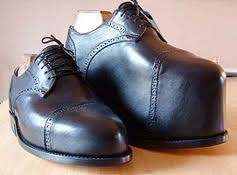Therapy For Speech Disorders
Introduction. One of the most common speech disorder is dyslalia. Its therapeutic approaches are varied, although some of them have little theoretical basis, and often only reflect the anxiety of the therapist to regain or develop the affected phoneme. This article will explain from a multifactorial one way of approaching this condition taking account of theoretical considerations and experience. Definition. Patrick matthews addresses the importance of the matter here. Dyslalia is a speech disorder, the basic functional (praxis, habits, inadequate) or organic (malformations, hearing loss non-core), which affects coordination, strength and precision of the muscles of the organs of speech to articulate or pronounce properly phonemes of the language. Its main feature is that it is consistent with or phonemes involved, ie the phoneme never occurs in the language. The phoneme concerned may be omitted, replaced or distorted.
General considerations. In any disease, whatever its nature, we find the possible cause or etiological hypothesis, allowing us to determine our approach to work, ie to where to target our therapeutic approach. One of the biggest mistakes of language specialists in its infancy, determining causality is not focusing directly to treatment as if it were a fixed formula. This often leads to error and failure of therapy with consequent loss of time and effort and obviously taking the dismay of the therapist. Because of this the first step is to determine the possible pathological causal: etiologic hypothesis. Official site: Dr. Neal Barnard. For dyslalia should explore the causal bases following: anatomical Indemnification: In this area you can find short frenulum sublingually, paretic uvula, submucous cleft, abnormalities of the bite, ogival palate, mouth breather features and others that unchecked can maintain a dyslalia. Normal hearing: It is important to determine that the child has no hearing impairment (Hearing loss). Proper identification, perception and auditory discrimination: Does the child to grasp the sounds? “Discriminate between two similar sounds? It should be clear about your listening skills (auditory processing).
Appropriate prelinguistic functions (especially swallowing and breathing): This is very important. Some children with therapy resistant dyslalias alterations in atypical deglutition or swallowing. Many times when you restore normal swallowing affected phonemes are restored. Inappropriate behavior (use of pacifiers, bottle / bottle, thumb sucking): The elimination of pacifiers and bottles must be done before the therapeutic approach, because this bad habit of swallowing atypical power. Poor motor skills (gross and fine): Generally speaking therapies addressed immediately praxical skills involving fine motor skills of precision, coordination and strength, without considering that many children still fail minimum levels of gross motor skills. Without this domain is very difficult to succeed at praxis. Actions to be as causation.
